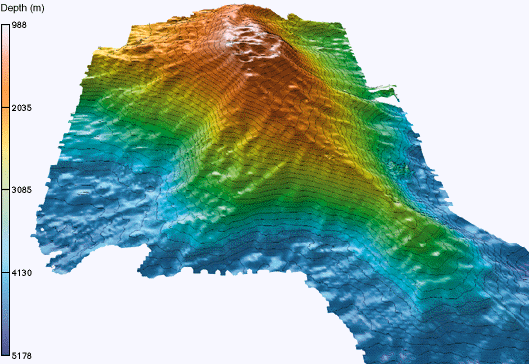[/caption]
Many volcanoes start out on land, rising above the surrounding landscape. But many more volcanoes get their start at the bottom of the ocean. These underwater volcanoes, or submarine volcanoes, can eventually grow into islands that rise above the surface of the ocean.
Geologists have identified more than 5,000 active underwater volcanoes, which account for more than 75% of the total lava that erupts every year. Most of these are located along the mid-ocean ridges, where the Earth’s tectonic plates are spreading apart. Most of these are very deep underwater, and difficult to study, but some are located in more shallow water.
An underwater volcano erupts differently than a surface volcano. This is because there is an unlimited amount of water to cool down the lava. A shell of rock hardens around the lava almost immediately, creating a type of formation called pillow lava. Deeper than about 2,000 meters, the pressure of the water is so high that it can’t boil, and so underwater volcanoes are difficult to find using hydrophones.
Underwater volcanoes build up over time, and can eventually reach the surface of the ocean. This is what happened to form the Hawaiian islands. The Earth’s crust has drifted above an active vent, creating each of the islands in turn. A new Hawaiian island, Lo’ihi, is forming under the ocean about 48 km off the southeast coast of Hawaii. It’s already taller than Mount St. Helens and will breech the surface in a few hundred thousand years.
We have written many articles about the Earth for Universe Today. Here’s an article about different types of volcanoes, and here’s an article about how volcanoes form.
Want more resources on the Earth? Here’s a link to NASA’s Human Spaceflight page, and here’s NASA’s Visible Earth.
We have also recorded an episode of Astronomy Cast about Earth, as part of our tour through the Solar System – Episode 51: Earth.

